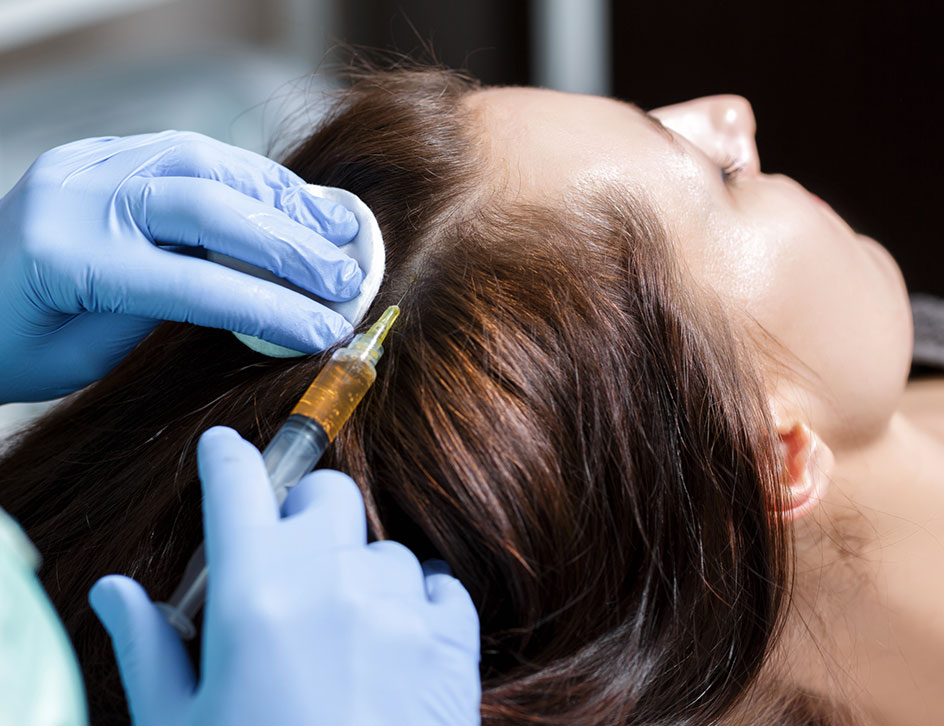Sweaty underarms, hands or feet? Never leave the house without antiperspirant?
Excessive sweating can be more than highly embarrassing.
It’s often a cause of daily, social anxiety and stress. And excessive sweating is not that rare or unusual. An estimated 300,000 people in the UK – up to 3 in every 100 of the population – live with excessive sweating, according to the NHS.
Excessive sweating can affect your entire body, or may only affect specific areas, particularly armpits, hands and feet, face and chest, and groin. In addition, more unpleasant effects often include, body odour and minor skin problems such as bacterial infections.

Highly effective treatments
No one should have to unnecessarily suffer from the fear of excessive sweating. Whether as a result of an underlying condition or simply reacting to spicy food.
Health information and medical advice should always be sought from your GP or dermatologist. However, today, there are several highly effective treatments which are used to treat excessive sweating, from prescription medications and anticholinergic drugs to iontophoresis and botulinum injections.
Hyperhidrosis
Excessive sweating is caused by a medical condition called hyperhidrosis, entirely unrelated to the body’s normal response to heat or exercise.
Hyperhidrosis excessive sweating may be defined as an “incident of excessive sweating”, which:
- Occurs at least once a week for no obvious reason.
- Negatively affects the social life or daily activities of people living with excessive sweating.
There is also more than one type of hyperhidrosis which may cause excessive sweating.

Which type of hyperhidrosis excessive sweating do I suffer from?
Primary focal hyperhidrosis
The most common form of hyperhidrosis is called primary focal hyperhidrosis.
This type of excessive sweating is caused by sweat glands that are triggered by overactive nerves, despite the lack of a stimulus, i.e. a physical activity or rise in temperature.
The reaction can be aggravated by anxiety and nervous stress, causing hands and feet to sweat or face to heavily perspire. This type of hyperhidrosis has no known medical cause, although the condition may be hereditary in some families.
Secondary hyperhidrosis
This is a less common type of excessive sweating, which is more likely to produce sweating all over the body. Secondary hyperhidrosis is caused by an underlying medical condition, including:
- Diabetes
- Gout
- Heart attack
- Infections
- Low Blood Sugar
- Menopause hot flashes
- Nervous system disorders
- Obesity
- Opioid withdrawal
- Some types of cancer, e.g. Hodgkinson’s Disease
- Spinal cord injuries
- Substance abuse
- Thyroid problems
Hyperhidrosis excessive sweating can also be caused by particular medications or treatments including:
- Anticholinesterase – used in Alzheimer’s disease medications.
- Pilocarpine – treatment for Glaucoma.
- Propranolol – prescribed for high blood pressure.
- Some antidepressants.
Compensatory hyperhidrosis
Compensatory hyperhidrosis is also known as compensatory sweating. This form of excessive sweating is produced following a surgical procedure, often affecting only one part of the body.
It’s a most common side effect of endoscopic thoracic sympathectomy (ETS) – surgery to treat severe focal hyperhidrosis by removing a section of the sympathetic nerve system to eliminate nerve overactivity and reduce sweating.
Compensatory hyperhidrosis sweating affects between 30 and 90 per cent of people with primary hyperhidrosis. Sweating excessively occurs on the back, chest, abdomen, legs, face, and/or buttocks, and can be even more extreme than original hyperhidrosis.
How different sweat glands cause types of sweating
Sweating is the way your body maintains its core temperature at or around 37 °C. Areas of the skin with the greatest density of sweat glands are the palms and soles of the feet.
When the body’s temperature rises, the nervous system automatically triggers the sweat glands. However, sweating also normally occurs when you’re nervous, especially on the palms of your hands.
Types of sweat glands
Eccrine
Located throughout the surface of the skin, sweat glands which primarily secrete water and electrolytes (minerals carrying an electrical charge).
Apocrine
Found only in skin containing hair, and only secretes oily substances containing fats, proteins, and steroids via root canals.
Apocrine sweat glands often only react to emotional stimuli including, anxiety and fear. Profuse sweating is often seen in the armpits, palms and soles of the feet.
Apoeccrine
Concentrated in areas of the apocrine glands, secreting watery fluids similar to eccrine glands
Preventing excessive sweating – try these first
There are a number of options which can be used to treat excessive sweating, ranging from types of clothing and footwear to “over the counter” products such as antiperspirants.
In cases where these measures appear to have little effect, your dermatologist, skin specialist or doctor may refer you for further medical tests. They may also recommend medical treatments often used to treat hyperhidrosis involving botulinum injections or iontophoresis.
Antiperspirant
A dermatologist may recommend trying over the counter antiperspirants as a first treatment for excessive sweating.
Antiperspirants will stop a specific area of the skin from sweating while deodorants simply disguise body odour. A number of prescription antiperspirants include aluminum chloride, which blocks the sweat glands.
If an antiperspirant appears ineffective to control production of sweat, the next step is to try armpit shields.
Armpit pads
These are protective ‘shields’ for the underarms that are worn to protect undergarments from heavy perspiration. There are different types of armpit shield pads which can be attached to clothing, and are re-washable and reusable such as dress shields, and garment guards. Other types can fasten around the torso, arm or can be stuck directly onto the skin, or the inside of an undergarment.
However, if the underarms produce excessive sweat – known as axillary hyperhidrosis– the armpit pads can quickly become saturated, feel heavy and loose, and may start to leak.
Clothing, Socks and Shoes
Some types of undergarments and footwear can actually increase sweating
Garments made with synthetic fibres, such as nylon, do not absorb sweat. Items such as socks and underwear, should be made from natural fibres. Loose clothing should also be a first choice, wherever possible. Footwear made with natural materials, such as leather, are also recommended.
Medical treatments for excessive sweating
A doctor or epidemiologist may advise patients suffering with excessive sweating problems to undergo a course of medical treatment, which are known to achieve significant improvements. At a consultation you are likely to be asked to provide some personal data. The information will help decide which treatment may be best for you and your personal health.
Botulinum toxin injections
This is a treatment for hyperhidrosis, in which the nerves triggering the sweat glands are blocked. A typical treatment session usually lasts around 3o minutes.
Possible side effects may include redness and slight pain felt at the injection site. A slight muscle weakness may be felt, caused by muscles relaxing in response to the medication.
Results of the treatment are temporary but usually last about six months, which means patients may need several injections for continued results.
Anticholinergic drugs
A medication that inhibits the transmission of impulses along the parasympathetic nerves. This a system of nerves that prevents the body overworking by returning to a balanced state. Possible side effects typically include a dry mouth as well as decreased sweating, which is usually noticeable around two weeks after medication.
Iontophoresis
A treatment to reduce sweating which involves hands, feet submerged in a bowl of water. A painless, electric current is then passed through the water. Minor side effects experienced could be dryness of the skin or possibly, slight irritation and peeling of the skin. Any side effects can usually be treated by applying moisturiser to the skin after each session. Patients usually require two to four treatment sessions of 20-30 minute duration.
ETS (Endoscopic thoracic sympathectomy)
The removal of a section of the sweat gland nerves in the thoracic region, which runs from the base of the neck down to the abdomen. A surgical procedure is only recommended in only the most severe hyperhidrosis cases, in which a patient has not responded to any other treatment options.
Sweat Test and skin area accuracy
Before treatment for excessive sweating, a doctor or epidemiologist may recommend you take a test to precisely pinpoint areas of skin where you sweat excessively, and the severity of the condition.
There are different types of sweat test, including:
Iodine-Starch Test
An iodine solution is first applied to the affected area and allowed to dry before starch is next applied. The precise area where excessive sweating is experienced will be revealed by turning the iodine-starch combination a dark blue colour.
Skin Conductance
Also known as the ‘electrodermal response’ or ‘galvanic skin response’. It measures the skin’s ability to temporarily conduct electricity when reacting to stimuli.
The two widely recognised areas for obtaining a reliable response are the palms of the hands and soles of the feet, where a high density of highly responsive, eccrine sweat glands are located.
Two electrodes are placed on either of the palms of the hands or each sole of the foot, and a tiny electric charge is passed between the two points. Increased arousal immediately causes the skin to be a slightly better conductor of electricity, which is measured.
Thermoregulatory Sweat Test (TST)
Investigates ability to sweat under laboratory controlled conditions of temperature, humidity and air flow. Body is exposed to high heat and humidity in a sweat cabinet, which triggers sweating throughout the whole body.
This type of sweat test is important for diagnosing specific nerve disorders that result in abnormal body temperature regulation and excessive sweat production.
Get in touch today to discuss treatment options for this condition, click here to send us an email.
I was very nervous about getting lip fillers for years, but I got recommended to Mr Golchin and I cannot recommend him enough! He made me feel at ease about the treatment and gave me exactly what I wanted! It was painfree and my results are amazing! – Sarah
SarahI have been attending Mr. Golchin at his clinic in Dublin for Botox & Fillers for quite a few years, with great results. I am never concerned about trying fillers in any new areas of my face or trying any new treatments suggested, as I have complete confidence in Mr. Golchin and his team. It’s very important to me to achieve a natural result while still noticing an obvious improvement and I am never disappointed. – Michelle
MichelleI contemplated rhinoplasty for a number of years and after extensive research I finally decided to go ahead with it in August 2017. To say it was a decision not taken lightly would be an understatement. I wanted the best results and the best surgeon and I can honestly say I got both. Mr Kambiz Golchin is a true professional and perfectionist and it is clear he takes great pride in his work. Mr Golchin established exactly what I wanted and delivered, surpassing my expectations. Bex
BexI had decided many months ago to get rhinoplasty and had since visited a number of the top surgeons in London, after being dissatisfied a friend referred Mr Golchin. From start to finish, including my pre operative care to my end result I could not be happier and would highly recommend Mr Golchin as a wonderful surgeon who has changed my life and I could not be happier with my new nose. – cmbrowne
C Browne


